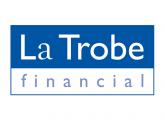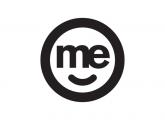Compare Loan Types:

Are Split Loans the Best of Both Worlds?
With hundreds of home loan packages available, it is easy to see why many borrowers can drown in a sea of choices. Identifying the right type of loan that will work best for you is essential.
If you are thinking about choosing a fixed or variable interest rate loan, you may wish to consider splitting your home loan. This way, you can get the best of both worlds.

What is a Split Rate Home Loan?
Many first-time borrowers are not aware that they can divide their mortgage into two different parts. A portion of their loan can have a variable rate, while the remaining portion can have a fixed interest rate. The ratio of variable vs fixed interest is entirely up to the borrower.
For instance, you could have a $500,000 home loan after purchasing your first property. After carefully considering the various types of home loans on the market and deliberated how they can match your needs, you end up deciding that a 60:40 split will work for you.
In this case, your home loan will be in two parts:
- You choose to have the bigger portion ($300,000) of the loan with a fixed interest rate
- The remaining portion ($200,000) will take on a variable interest rate
Our Lenders




















Why Should You Split Your Home Loan?
If you have studied your options, you will already know that fixed and variable rate loans come with their own advantages and disadvantages. Each of these loans come with benefits that you may like, but it still may be hard to pick between them.
A split loan gives you most of the features and advantages of these two home loan types. You can benefit from those that are most important for you and your situation.
Since a portion of the home loan has a fixed rate, you will be protected if the interest rates begin to increase. Of course, you will not benefit (on that portion of the loan) if the rates drop. Another great thing about a fixed rate home loan is that you know exactly what your repayments will be.
On the other hand, the variable part of the loan gives you the flexibility that you need for unlimited additional repayments. It means that you can pay off your loan much faster without waiting monthly to pay for the specific repayment amount.
You can also get access to features such as a redraw facility and offset account. These benefits, of course, will depend on the type of variable rate loan that you choose.
Also, if the interest rate drops, you can enjoy lower repayments. If the rate goes up, however, your repayments will increase.
Another important thing to consider is that an interest rate drop does not automatically mean that your repayments will decrease as well. You have the option to lower them, but you may want to maintain the repayments, so the home loan pays off faster.
Getting the Most Out of Your Mortgage
Before you go for a split rate loan, you should consider all of your options first.
The most significant factor that will affect your loan is the division of the loan into two parts: the variable and fixed rates. The division is entirely up to you, which makes it ideal for those who know how to create their financial plan. If it is the first time that you have this choice, the best start is to decide how you will split the loan.
To make it easier for you, make sure you consider the following:
- The possible changes in your financial or personal situation in the future
- Your commitment to a certain amount of fixed interest rate over a term
- Your main concern, whether it is stability on interest rates, or reducing the impact of the rate fluctuations
- You may also want to determine if you wish to make additional repayments to finish the loan quickly. Perhaps a redraw facility may also be helpful in this case.
Before proceeding, make sure that you know not just the advantages of split rate home loan but the drawbacks as well. A big concern is that you need to pay two fees because you technically have two home loans.
Talk to the experts at Quantum Finance Australia for help in choosing the right loan for your needs.
What Are the Pros?
- You can budget with greater accuracy because of the fixed portion of the loan
- Typically, lenders allow extra repayments on the variable portion of the loan
- The variable repayment amount can decrease if interest rates fall
What Are the Cons?
- Rising interest rates will cause your repayment amount on the variable portion of the loan to rise
- Because you technically have two home loans, you may get fees charged for both loans
Enquire With Us Today
